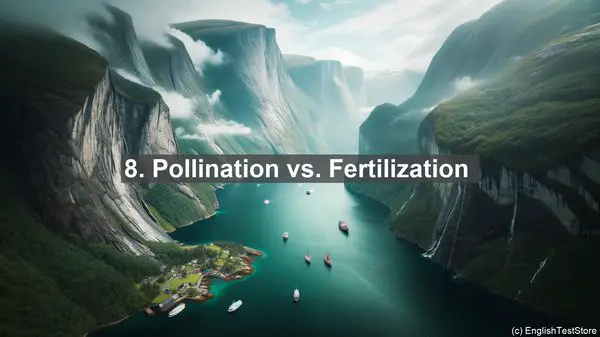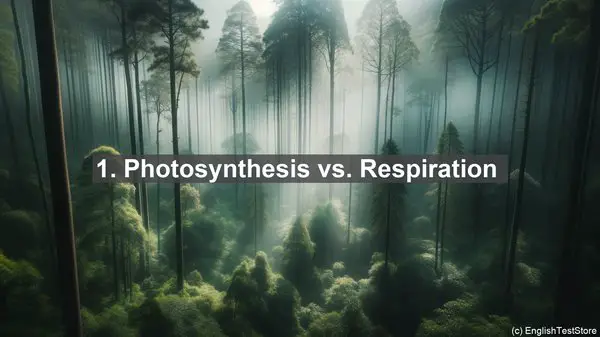Introduction
Today, we’re diving into the fascinating world of crop physiology. As you delve deeper into this subject, you’ll come across several terms that might seem similar but have distinct meanings. In this lesson, we’ll unravel the top 10 commonly confused words in crop physiology, ensuring you have a crystal-clear understanding of each one.
1. Photosynthesis vs. Respiration
Photosynthesis and respiration are two fundamental processes in plants. While both involve the exchange of gases, they occur in different contexts. Photosynthesis is the process by which plants convert light energy into chemical energy, producing oxygen as a byproduct. On the other hand, respiration is the process through which plants release energy from stored sugars, consuming oxygen and producing carbon dioxide. So, while photosynthesis is about energy production, respiration is about energy release.

2. Transpiration vs. Evaporation
Transpiration and evaporation both involve the loss of water, but they occur through different pathways. Transpiration is the process by which water is lost from plants through their leaves. It’s a vital mechanism for transporting water and nutrients throughout the plant. On the other hand, evaporation is the process by which water changes from a liquid to a gas, usually from the soil or water bodies. So, while transpiration is specific to plants, evaporation can occur from various sources.
3. Macronutrients vs. Micronutrients
Nutrients are essential for plant growth, and they can be broadly classified into macronutrients and micronutrients. Macronutrients are required in larger quantities and include elements like nitrogen, phosphorus, and potassium. They play a crucial role in the overall development of the plant. Micronutrients, as the name suggests, are needed in smaller quantities, but they are equally important. Examples of micronutrients include iron, zinc, and manganese. So, while macronutrients are needed in larger amounts, micronutrients are just as vital, albeit in smaller quantities.
4. Germination vs. Emergence
Germination and emergence are two stages in a plant’s life cycle. Germination is the process by which a seed transforms into a young plant, breaking out of its dormant state. It involves the absorption of water, activation of enzymes, and the growth of the embryonic plant. Emergence, on the other hand, is when the young plant breaks through the soil surface and becomes visible. So, while germination is the initial stage, emergence is the point at which the plant becomes apparent above the ground.
5. Herbicide vs. Pesticide
Herbicides and pesticides are both used in agriculture to protect crops, but they target different organisms. Herbicides are specifically designed to control or eliminate weeds, which can compete with crops for resources. Pesticides, on the other hand, are a broader category that includes insecticides, fungicides, and herbicides. They are used to combat various pests that can damage crops. So, while herbicides focus on weed control, pesticides have a wider range of applications.
6. Xylem vs. Phloem
Xylem and phloem are two types of vascular tissues in plants. Xylem is responsible for the transport of water and minerals from the roots to the rest of the plant. It’s like the plant’s plumbing system. Phloem, on the other hand, is involved in the transport of sugars and other organic compounds, such as hormones, from the leaves to other parts of the plant. So, while xylem is all about water and minerals, phloem is about the movement of nutrients and other substances.

7. Stomata vs. Lenticels
Stomata and lenticels are structures involved in gas exchange in plants, but they are found in different parts. Stomata are tiny openings, primarily present on the leaves’ surface, through which gases like carbon dioxide and oxygen enter and exit. They also play a role in regulating water loss through transpiration. Lenticels, on the other hand, are corky, raised areas found on the stems and woody parts of plants. They allow for gas exchange in these regions. So, while stomata are leaf-specific, lenticels are found in stems and woody tissues.
8. Pollination vs. Fertilization
Pollination and fertilization are two crucial processes in plant reproduction. Pollination is the transfer of pollen from the male reproductive part (stamen) to the female reproductive part (pistil) of a flower. It can occur through various agents, including wind, water, and animals. Fertilization, on the other hand, is the fusion of the male and female gametes, resulting in the formation of a zygote. It’s the point at which the seed starts to develop. So, while pollination is about pollen transfer, fertilization is about the union of gametes.
9. Dicot vs. Monocot
Dicots and monocots are two major groups of flowering plants, and they have distinct characteristics. Dicots typically have two cotyledons (seed leaves), net-like leaf venation, and flower parts in multiples of four or five. Examples of dicots include roses and sunflowers. Monocots, on the other hand, have a single cotyledon, parallel leaf venation, and flower parts in multiples of three. Grasses and lilies are examples of monocots. So, while dicots have two cotyledons, monocots have just one.
10. Senescence vs. Dormancy
Senescence and dormancy are two stages in a plant’s life cycle, but they serve different purposes. Senescence is the natural aging process of a plant, where it undergoes physiological and structural changes, leading to eventual death. It’s a vital part of the plant’s life cycle. Dormancy, on the other hand, is a period of inactivity or reduced activity, usually during unfavorable conditions. It’s a survival strategy, allowing the plant to conserve energy and withstand harsh environments. So, while senescence is about the end of a plant’s life, dormancy is a temporary state of inactivity.
